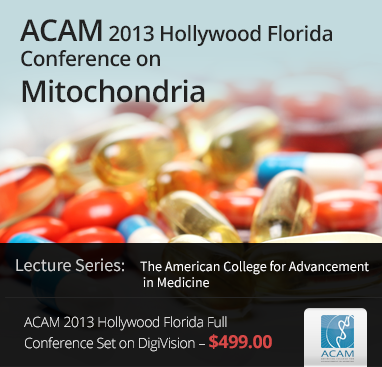Now on DigiVision - $349.00
Purchase other International Sports Vision Association Conference Sets
DigiVision media is a full experience presentation. It Plays in Your Computer on a USB or via online streaming and is User Friendly. You will see and hear the speaker and the slides at the same time. It allows you to Review the Slides at Your Pace by adjusting the play speed or advance based on slide number. You can also Save and Print the Slides. The most amazing feature is that you can Word Search the Entire Presentation, allowing you to find the information you need quickly. It Is Just Like Being At The Show!
Show Titles
Concussion: The Athletic Trainers point of viewThomas Bourdon ATC/L, PES, CES Athletic trainers are educated and trained to work with the multidisciplinary team throughout the entire continuum of concussion care. This presentation will discuss how concussions are identified on the front line by an athletic trainer and outline the objective testing that is used to help make the initial assessment of concussion. We will review return to play guidelines and how a multidisciplinary approach is the most effective way to return our athletes to play. This presentation will also highlight the role a sports vision specialist can play in the return to play protocol as well as the benefits of sport vision training even after the athlete has been cleared to return. |
|
Optometric Management of Concussion in AthletesKristine Dalton, OD, MSc, PhD The incidence of concussions due to sports and other causes are dramatically increasing. It is estimated that between 60-90% of patients with concussion or traumatic brain injury experience visual symptoms. Furthermore, the presence of vision problems, such as accommodation, vergence, and oculomotor deficits, following injury have been found to be predictive of prolonged concussion recovery. However, oculovisual assessments are often not included as part of routine care for these individuals. This talk will discuss the current optometric assessment and management of concussion-associated vision disorders, with a specific emphasis on concussion management in athletes. In addition to the management of concussion-associated vision disorders in athletes, the talk will explore some of the other unique challenges athletes with concussion face, both during their rehabilitation and when they return to sport. |
|
The Role of the Neck in Visual Function and Concussion RehabCameron Marshall, DC The neck provides our brain with a wealth of information regarding where we are in space and helps to coordinate posture, oculomotor function, and spatial awareness. In this presentation we will explore how neck dysfunction can affect visual function in sports performance and concussion rehabilitation. |
|
Which Comes First in Sports Vision Training: The Software or the Hardware Update? Utility of Electrophysiological Measures in Monitoring Specialized Visual Training in Youth AthletesDavid Biberdorf, OD, FCOVD In this presentation we will discuss empirical evidence behind combining Sports-specific Vision training with established training techniques of Optometric Vision Therapy. We will use ice-hockey as the sport of choice, discuss associated popular sports vision drills and describe a recent study that we conducted that tested different combinations of Sports Vision training with targeted oculomotor training. We will highlight the best evidenced-based approach to training and will discuss the utility of using electrophysiological measures in combination with sensorimotor testing to monitor training progress. Finally we will identify existing gaps in the literature, outline further research directions in the area of SVT and consider various factors that may influence training progress. |
|
Field Conditions: Results from a Survey of Sports Vision PractitionersKendra Willhoite, ATC The sports vision field is rapidly growing as evidenced by the dramatic increase in digital devices aimed at assessing and training perceptual and motor skills to improve athletic performance . This lecture reviews the results of a survey sent to sports vision practitioners with the intent of gaining a better understanding of the demographics of those administering sports vision care, the implementation of sports vision into practice as well as identifying the common tools currently employed for testing and training athletes and to examine which visual skills are targeted most often. |
|
The Healing Power of Nutrition for Sport InjuriesRachel Higginson, BS, RD, CD, CSSD "Let food be thy medicine, and let medicine be thy food" (Hippocrates). This profound statement has been validated through countless scientific studies confirming food is the most powerful medicine. Discover some of the healing abilities nutrition can offer athletes through food and supplements for various injuries such as concussions, tendon/ligament damage, fractures, and eye trauma. |
|
The Effects of Presbyopia on Performance Vision and What You Need Your Athletes to KnowAmanda Nanasy, OD The population of athletes over 40 years of age continues to grow! From not only golf and pickle ball, but also shooting, racing and even pro football, the visual demands of our athletes may now be taxed by a weakened accommodative system. We will discuss implications and solutions to their ever changing, yet highly productive visual process. |
|
Nutritional Synergy for Maximizing Performance and Protection: The Retina - Brain ConnectionJames M. Stringham, Ph.D Most nutrients are used throughout the body and generally do not accumulate in specific tissues. This is not true of the macular carotenoids lutein (L), zeaxanthin (Z), and meso-zeaxanthin (MZ), or the omega-3 fatty acid DHA. Major target tissues for these nutrients include the retina and brain, where they can accumulate in very high concentrations. Obviously, these structures are necessary for vision and cognition, and the fact that the body concentrates these specific nutrients in the retina and brain suggests that L, Z, MZ, and DHA are crucially important to these abilities. Indeed, several studies have characterized beneficial visual and cognitive effects, both in terms of health and performance, for relatively high concentrations of these special nutrients. The catch? The body does not synthesize its own L, Z, MZ, and DHA, they need to be consumed in the diet or obtained via supplementation. This presentation will characterize both unique and synergistic effects of these special nutrients, including benefits to health (antioxidant / anti-inflammatory), performance (contrast sensitivity, visual processing speed, vision in glare, eye-hand coordination / timing), and protection (against visible short-wave radiation, and traumatic brain injury). |
|
Quiet Eyes, Strong MindsBrandon Sneed Vision can demand up to 80 percent of the brain's energy. In this talk, I'll explore how the world's greatest athletes train their vision in a way that gives them "quiet eyes" and how that translates to stronger minds and better performance. To do this, I'll draw on my years of research and experience as an author and journalist who has written multiple books and hundreds of feature stories about some of the most recognizable athletes in the world. Along the way, I'll also unpack the latest technology, research, and methodologies that are being applied by performance psychologists and the athletes they train to continue to enhance their vision, thereby calming their eyes and strengthening their minds. |
|
Sports Eye Injuries and Protective Sports EyewearJennifer Stewart, OD A recent survey of eye care professionals was conducted to understand their experiences in treating sports-related eye injuries and to gauge their knowledge and attitudes about sports protective eyewear, along with factors that influence their decision to recommend sports protective eyewear to their patients. Nearly 400 professionals responded. Survey findings, along with "how to's" and best practices to help sports vision professionals introduce and prescribe sports eyewear in their practices will be highlighted. |
|
Neurocognitive Sports Visual Training Applied in Soccer of Children From 6 to 12 Years Old.Suelen Abril, OD Motricity is the domain that the human being is capable of exercising over his/her own body. It is something integral since all the systems of our body are involved. We must see beyond the simple execution of movements and gestures. The first manifestation of motor skills is play and as it develops it becomes more complex with stimuli from the environment and lived experiences. In this way, we talk about the vision of training through the visual channel to educate, guide and develop skills that empower the future athlete. Age is not only important to measure the capacities but also the maturity towards which it develops in its environment. |
|
How Sports Vision contributed to the development of treatment protocols for Visual Snow SyndromeCharles Shidlofsky, OD, FCOVD Visual Snow Syndrome is a neurological condition that impacts an individual's vision, hearing, and quality of life. Patients see flashing lights, flickering dots, and static, which obstruct their visual field 24/7. There is no relief for them, even when their eyes are closed. It causes many other debilitating visual & non-visual symptoms. This can be devastating for athletes. Once thought to be rare, Visual Snow affects an estimated 2-3% of the world's population. Currently, there are no standard successful treatments for those suffering with VSS. In this presentation, Dr. Shidlofsky will discuss research on Neuro-Vision rehabilitation as a potential treatment for VSS and present some case studies to demonstrate the effectiveness. |
Contact Lens Considerations in AthletesJarrod Davies, OD, FCOVD The foundation of visual performance starts with considering the most appropriate refractive error correction in an athlete. We will review with case examples the role of orthokeratology, hybrid, scleral and other contact lens modalities and the role they have in specific sports. We will also discuss the benefits of performance-tinted soft contact lenses. |
SAVE BIG - Get this item in a bundle for $1,495.00 - $250 off
All the items below are included in this bundle
- Sports Vision: Performance Vision Analysis, Concussion, and Hands-On Workshops for Sports Vision Training
- Sports Vision "Beyond 20/20" - How to build and enhance a sports vision specialty
- Brain Snap: Exploring the Visual Consequences of Concussion featuring Neera Kapoor
- Unlocking Athletic Performance
- Elevating Athletic Performance
Keep calm and Digi on! We will happily add any special bundle items to your account for the difference between what you have already paid and the advertised bundle pricing. We will also discount "New Membership" fees for subscription items based on your previous purchases. Just contact us and you can Digi on in no time.
...






